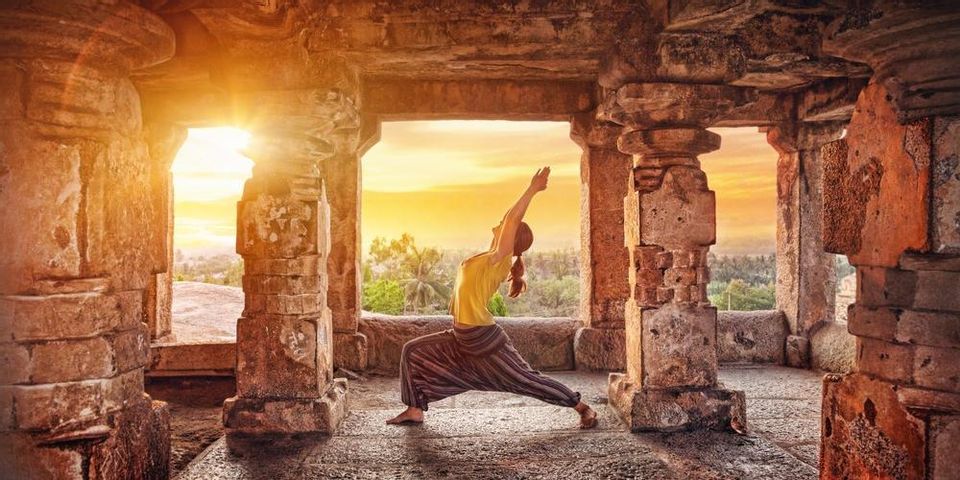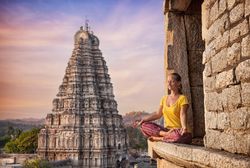From Early Origins to Modern Yoga Classes: The History of Yoga

They say you need to know where you’ve been to find out where you’re going. The concept rings true with yoga, too. Whether you desire to learn the peaceful art of meditation or want to become more in tune with your mind, body, and soul, yoga can put you on the right path. By exploring the past, you can learn what yoga classes will most appeal to you.
Historically, yoga can be defined into four basic stages.
Pre-Classical Yoga
Over 5,000 years ago, the Indus-Sarasvati civilization in Northern India developed the beginning practices of yoga. Although some historians date its origins back to 10,000 years ago, the pre-classical yoga period signifies the first mention of yoga in Rig Veda — a collection of sacred texts featuring songs, rituals, and mantras.
Rig Veda was used by Vedic priests known as Brahmans and mystic seers called Rishis. Together, they recorded over 200 scriptures and documented their practices and beliefs in a collection of works known as the Upanishads. This started the idea of self-ritual sacrifice in which the ego is transformed through teachings of Karma yoga (action) and Jnana yoga (wisdom).
Classical Yoga
 During the classical yoga era, a systematic concept of yoga was developed thanks to Patanjali’s Yoga-Sûtras. Because the pre-classical period was a mash-up of contradicting ideas and practices, this written version unified the beliefs. Composed during the second century, it defined the eight-limbed path of Raja yoga. Considered the father of yoga, Patanjali explained the steps to achieving enlightenment or Samadhi.
During the classical yoga era, a systematic concept of yoga was developed thanks to Patanjali’s Yoga-Sûtras. Because the pre-classical period was a mash-up of contradicting ideas and practices, this written version unified the beliefs. Composed during the second century, it defined the eight-limbed path of Raja yoga. Considered the father of yoga, Patanjali explained the steps to achieving enlightenment or Samadhi.
Post-Classical Yoga
Centuries after Patanjali's practices and publications, yoga masters started to focus on rejuvenating the body and prolonging life. Going against the pre-classical yoga beliefs of the Vedas, this group involved the physical body as the way to obtain enlightenment. Tantra yoga, a more extreme set of techniques, attempts to cleanse the mind of physical existence.
Eventually, the creation of Hatha yoga was formed, which explores the connections between the physical and spiritual self. This practice is primarily considered a western view and is taught in many American yoga classes today.
Modern Yoga
The Parliament of Religions in Chicago brought global attention to yoga in 1893. Swami Vivekananda stunned the audience with his thoughtful lectures about yoga and worldwide religions. At the turn of the century, more yoga masters traveled west. Meanwhile, Hatha yoga remained popular in India throughout the 1920s and 1930s. The first yoga school was opened in 1924 in Mysore by Tirumalai Krishnamacharya.
Swami Sivananda founded the Divine Life Society in 1936. With over 200 published books, he went on to teach protégés like B.K.S. Iyengar, T.K.V. Desikachar, and Pattabhi Jois, who carried on his legacy of Hatha yoga. Several yoga centers and nine ashrams were opened around the world thanks to Sivananda. In 1947, Indra Devi founded a yoga studio in Hollywood, which helped to spread the popularity of the practice in the United States. Today, yoga classes are taught all over the world, and it’s clear that this alternative health method is here to stay.
Ailie Wellness Center in Cincinnati, Ohio, will guide you during your personal journey toward a happier, healthier lifestyle. Contact them today to ask about their yoga classes and monthly deals. If you need some daily inspiration, follow them on Facebook or Twitter!
About the Business
Have a question? Ask the experts!
Send your question

